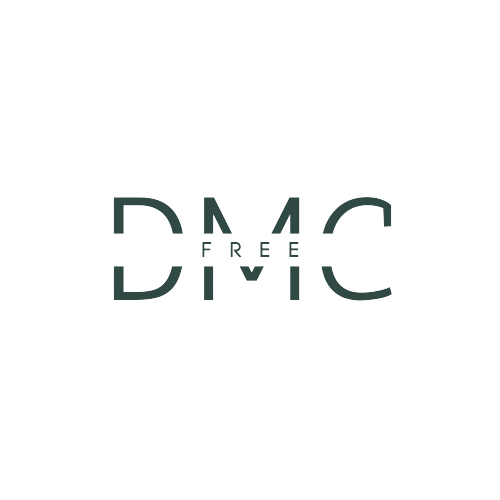
In the realm of technology, the term “full-stack developer” has gained significant attention. As the digital landscape continues to evolve, so do the roles that craft and support it. Full-stack developer jobs are in high demand, and with this demand comes competitive salaries. This article profoundly explains the monetary landscape of full-stack web development as of 2023.
Table of Contents
What is Full-Stack Development?
“Embarking on the path to Become a Web Developer in 2023 requires a deep dive into the full-stack universe. A full-stack developer, adept at both front-end and back-end realms, skillfully designs user interfaces, curates databases, manages servers, and crafts client-side applications.”
Full-Stack Web Salaries in 2023: An Overview
Full stack developer jobs have seen an upward salary trend over the past few years. As of 2023, factors such as geographical location, years of experience, and the specific tech stack one is proficient in all play a significant role in determining compensation.
Table 1: Average Salary Range by Experience in 2023
| Experience Level | Average Salary (USD) |
|---|---|
| Entry-Level (0-2 years) | $60,000 – $80,000 |
| Mid-Level (3-5 years) | $80,000 – $110,000 |
| Senior-Level (6+ years) | $110,000 – $150,000+ |

Geographical Variations
While the table above provides a general overview, it’s essential to understand that these figures can vary widely based on geographical location. For instance, full-stack developers in Silicon Valley or New York City often command higher salaries than those in smaller cities due to the higher cost of living and the concentration of tech companies in these areas.
Specializations and Their Impact
Not all full stack developer jobs are made equal. Specializing in a particular area or technology can significantly affect one’s earning potential. For instance, developers proficient in emerging technologies or those who have niche skills might find themselves earning more than the average salary for their experience level.
The Rise of Remote Work
By 2023, remote work will become more prevalent due to advancements in technology and changes in work culture influenced by events like the COVID-19 pandemic. Remote full-stack developer jobs often come with competitive salaries, as geographical boundaries do not constrain companies. This has further levelled the playing field, allowing talented developers from regions with historically lower average salaries to compete globally.
How to Boost Your Earning Potential
- Continuous Learning: The tech world is ever-evolving. By staying updated with the latest technologies and trends, you can ensure your skills remain in demand.
- Networking: Being connected within the industry can open doors to opportunities and potential job offers that might not be publicized.
- Certifications: While experience is crucial, obtaining certificates in specific technologies or methodologies can testify to your expertise.
Adjustments for inflation and the evolving tech market in each country might be needed for precise numbers in 2023.
Learn More: Become a Digital Marketer With No Experience in 2023
Table 2: Average Full-Stack Developer Salaries by Country in 2023
| Country | Average Salary (USD) |
|---|---|
| United States | $95,000 – $130,000 |
| Canada | $80,000 – $110,000 |
| United Kingdom | $70,000 – $100,000 |
| Australia | $75,000 – $105,000 |
| Germany | $65,000 – $95,000 |
| France | $55,000 – $85,000 |
| Brazil | $20,000 – $40,000 |
| India | $15,000 – $30,000 |
| China | $25,000 – $50,000 |
| South Africa | $20,000 – $45,000 |
| Russia | $20,000 – $40,000 |
| Spain | $45,000 – $70,000 |
| Japan | $70,000 – $110,000 |
| South Korea | $45,000 – $75,000 |
Please note that these figures are average ranges and can vary within each country based on factors like city, level of experience, and specific expertise. Moreover, the increasing trend towards remote work can further blur these geographical boundaries. However, the table should provide a general sense of how full-stack developer salaries stack up globally in 2023.
Why are full stack web developers paid so much?
Full stack web developers command high salaries due to their multifaceted expertise, encompassing both front-end and back-end development, making them a cost-effective hire for companies. Their holistic grasp of the entire software development cycle enables efficient problem-solving and adaptation to the ever-evolving technological landscape. The combination of the complexities of modern web applications, the pivotal role these developers play in a company’s digital success, and the higher demand versus supply in the job market further drive their compensation upwards. Their unique blend of technical proficiency, adaptability, and problem-solving abilities makes them invaluable assets in the digital age, justifying their attractive remuneration.

Conclusion
In 2023, full-stack developer jobs, including Entry-Level Tech Jobs, lead the tech sector, boasting competitive pay due to their intricate roles and high demand. Both budding and seasoned developers benefit from grasping the salary dynamics to steer their career paths effectively.
FAQ’s (Frequently Asked Questions)
1. Is full-stack development easy?
Full-stack development is multifaceted, requiring mastery of both front-end and back-end components. While it’s not easy, due to its broad spectrum of skills and technologies, one can become proficient over time with consistent effort and dedication.
2. What is needed to be a full-stack developer?
To become a full-stack developer, one needs a blend of technical skills spanning multiple areas: proficiency in front-end technologies (like HTML, CSS, and JavaScript), expertise in back-end development (using server languages like Node.js, Ruby, or Python), a firm grasp of databases, and understanding server and deployment processes. In addition, soft skills such as problem-solving and effective communication are equally vital.
3. What are full-stack skills?
Full-stack skills encompass a broad range of competencies. At the front-end, these include mastery of HTML, CSS, JavaScript, and frameworks like React or Vue.js. For back-end development, skills in server-side languages such as Node.js, Ruby on Rails, or Python, and database management (like using SQL or MongoDB) are essential. Also, understanding DevOps, server management, and cloud services plays a crucial role.
4. What are the 3 layers of full stack development?
Full-stack development is typically divided into three main layers:
- The Presentation Layer: This is the front-end, dealing with user interfaces and how the user interacts with the application.
- The Logic Layer: Often referred to as the back-end, this layer contains the business logic, server, and database operations.
- The Data Layer: This involves how data is stored, retrieved, and managed, often using relational databases or NoSQL databases.
5. Can I learn full stack in 3 months?
While the basics of full-stack development can be introduced in 3 months, mastering the full range of required skills typically takes longer. It depends on the learner’s dedication, prior experience, and the complexity of the topics covered. However, with intensive learning and hands-on projects, a solid foundation can certainly be built within this timeframe.
6. Can a non-IT person learn full-stack?
Absolutely! While having a background in IT can be advantageous, many successful full-stack developers have transitioned from entirely different fields. The key ingredients to success are passion, dedication, consistent learning, and practice. With the plethora of online resources and boot camps, non-IT individuals can pave their way into full-stack development.


